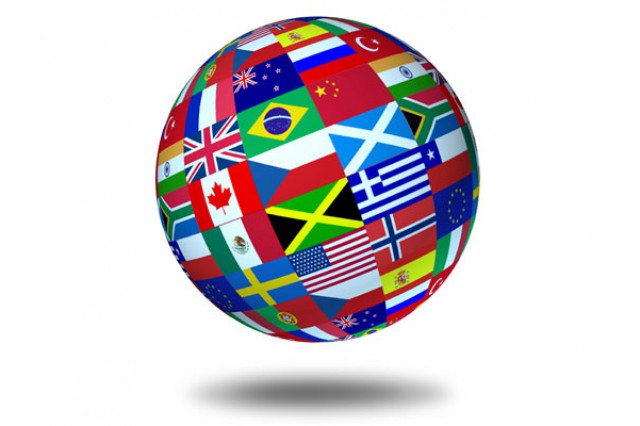
Foreign Influence: Top 3 Things Universities Must Understand
Co-Author, Mark Peters, Senior Consultant at Traliance
Higher education is seeing concerns unlike anything seen since the Cold War when the United States faced the perceived threat of Soviet Union governments benefiting from scientific discovery at U.S. universities. At that time, the sanctity of open science and academic freedom was codified with National Security Decision Directive 189 (NSDD-189.) However, the current political climate and targeted threats identified by the federal government are testing that open environment.
In a recent interview with the Boston Herald, The Director of the White House Office of Science and Technology Policy, Kelvin Droegemeier, said, “I am convinced there’s a systemic threat…the FBI tells us that there are over 1,000 cases involving China.”
Why is Foreign Influence Important Now?
Today universities are faced with weekly stories of foreign state-sponsored activity that the U.S. government has deemed to be a threat to U.S. national security and government policy regarding federally funded research.
China’s Thousands Talent Plan has been called out as a specific threat to the U.S. research world. Enforcement cases involving renowned faculty at internationally recognized U.S. institutions point to heightened attention by the U.S. government to full disclosure of all international collaborations and funding sources.
This builds off of the government’s 2019 actions to restrict international business with the Chinese telecommunications giant Huawei by adding the company to the BIS Entity List. High profile cases related to alleged IP theft from U.S. universities by Chinese researchers were also publicized in 2018.
What are Current Requirements Around Foreign Influence?
While many federal agencies are discussing implementing new regulations, little has happened to change the “official” rules of the road. However, agencies are implementing new terms and conditions on funding for both contracts and grants that restrict access to federal resources for those who have undisclosed foreign conflicts or connections with foreign talents programs.
It is clear that the U.S. government is doubling down on requirements for disclosure and, thus, increasing the need for federally funded research programs at universities to evaluate how to:
- Comply with Conflict of Interest and Conflict of Commitment guidelines
- Explore how to ensure full disclosure to ensure complete transparency of all collaborations and fidelity to open science.
Specifically, NIH, NSF, and DOE have communicated specific reminders and memos:
- National Institutes of Health (NIH): “Reminders of NIH Policies on Other Support and on Policies related to Financial Conflicts of Interest and Foreign Components”
- National Science Foundation (NSF): “NSF 19-200 Dear Colleague Letter: Research Protection”
- National Science Foundation: “Proposal and Award Policies Procedures Guide (PAPPG) 20-1” (effective June 2020)
- Department of Energy: “DOE Memo Prohibiting Personnel from Participating in Foreign Talent Recruitment Programs”
The Office of Science and Technology has provided an overview of other agencies in the “OSTP Letter to the Research Community on Undue Foreign Influence.”
How do Universities Comply with Foreign Influence Disclosure Requirements?
Keep in mind that the crux of these requirements is about federal funding. Carefully revisit your institution’s Conflict of Interest and Conflict of Commitment Policies. How effective are they? Are there additional requirements or questions that your institution needs to ask principal investigators? Is it time for refresher training for your faculty? Consider the right stakeholders and resources at your institution that have the knowledge to help monitor the changes and implications for your university. While foreign influence is not an “export controls” issue, there are many tie-ins as the stakeholders overlap in the realm of research compliance. An institution’s export controls compliance resources may be able to help institutional leaders pull together a holistic picture and strategy for efficiently vetting and disclosing international activities, ensuring proper government licenses for the involvement of non-U.S. Persons in export-controlled research, and driving investigators to fully disclose their potential sources of foreign influence.
Comments
New university foreign influence case: Song Guo Zheng, https://www.justice.gov/opa/pr/university-researcher-pleads-guilty-lying-grant-applications-develop-scientific-expertise
Another university foreign influence case: Simon Ang, https://www.justice.gov/usao-wdar/pr/university-arkansas-professor-arrested-wire-fraud
Another university foreign influence case: Yin Lang, https://www.justice.gov/opa/press-release/file/1364276/download
Update on a prior case: Chen Song, https://www.justice.gov/opa/pr/federal-charges-against-stanford-university-researcher-expanded




Interesting read titled “American Scientists Are Not a Threat to the U.S.” regarding the latest high profile university case: https://www.bloomberg.com/opinion/articles/2021-02-01/sparse-u-s-grants-send-scientists-looking-abroad-and-accused-of-spying